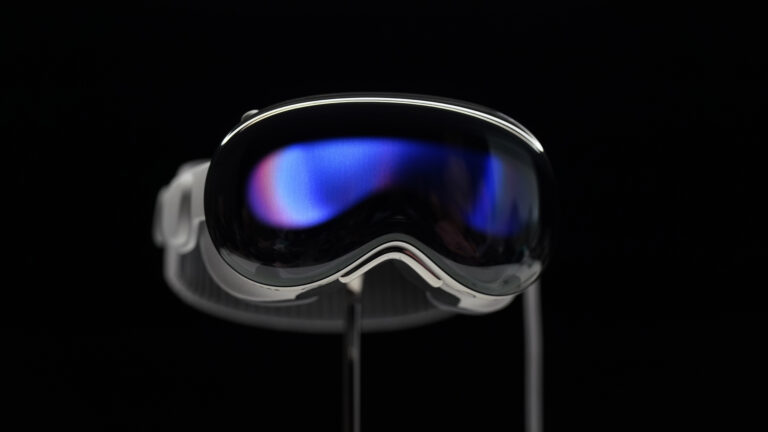Apple pushes sleep apnea detection but healthcare integration remains unclear
CUPERTINO, Calif. – Apple on Monday announced a new Apple Watch feature that will alert users to possible sleep apnea. It’s the latest development in the company’s decade-long effort to market its wearables as a tool that can help people live healthier lives.
In addition, the company has announced other hearing health features for its wireless earbuds. The company’s AirPods will be able to perform a hearing test, and later this fall will be used as a “hearing aid for the medical team,” Apple’s vice president of health Sumbul Desai said in a video of the recorded broadcast.
The new sleep apnea feature will use onboard clock sensors to detect the dangerous sleep disorder in which people stop breathing. At least 25 million Americans suffer from a condition that can result in daytime fatigue and increase the risk of heart disease and other negative health outcomes. However, it is still unclear how this new feature will enter or change the medical practice of sleep medicine – an ongoing challenge for data generated by clothing.
The feature monitors users for disturbances while they sleep, and alerts users to “signs of moderate to severe sleep apnea,” Desai said. The section will provide educational materials and a detailed report that can be shared with the doctor.
Desai said the algorithm was developed using machine learning on “an extensive dataset of clinical trials of sleep apnea.” Then, the algorithm was validated in an “unprecedented clinical study of sleep apnea technology,” Desai said. No additional information about this clinic job is immediately available.
Desai said the company expects approval from the Food and Drug Administration for the sleep apnea feature “very soon” and that the feature will be available on the new Apple Watches and the 2023 Series 9 in September. He added that FDA approval for the hearing aid technology is forthcoming.
Christine Lemke, CEO of consumer health data company Evidation Health, said that wearable sensors are probably more suitable for screening than for definitive diagnosis.
However, he said, “It is important to get a strong awareness to check this issue with your doctor. This seems to be a moment where the sensors are good to provide important information for the diagnosis the first. “
Seema Khosla, medical director of the North Dakota Sleep Center, agreed that this aspect looks promising. However, he pointed out that sleep apnea does not have the same symptoms for all people. For example, some people with this condition may not have low blood oxygen and may have sleep readings that appear normal.
“This could be a very valuable diagnostic tool as long as we understand what it can and can’t do – what questions it can and can’t answer,” he said. so. “This may be an important piece of information that at least sparks a conversation about sleep apnea.”
Meanwhile, Vik Kheterpal, a doctor and principal of CareEvolution, which develops technology used for studies on wearable devices, felt that Apple’s feature is part of a larger movement that can change the treatment of anxiety disorders. sleep apnea.
“The gold standard approach to sleep apnea diagnosis, diagnosis and treatment is too often, too late, and too expensive,” he said. With the latest emphasis on sleep hygiene made possible by the rise of [over-the-counter] consumer-grade clothing … we have an opportunity to move forward with new ways to rethink how sleep apnea is treated. ”
Apple’s first health push focused on health tracking but it has since announced a suite of Apple Watch, iPhone, and AirPods features aimed at giving users more information about their health. The Apple Watch also allows people to take electrocardiograms and can detect hidden atrial fibrillation. The company has also introduced features that detect whether people are exercising cardio and whether they are at risk of falling due to erratic walking.
Like other Apple health features, sleep detection comes with benefits, such as helping people discover hidden health conditions and problems. Many of these areas lead people into a health care system that may not prepare them.
“These improved diagnostic tools always sound good,” said Joseph Ross, a professor at Yale School of Medicine who is completing a study of the Apple Watch in clinical practice. But the truth is a bit more complicated. How many people [are]screening positive? Of those, how many are actually problematic? What are the implications for subsequent health care utilization and costs? What is the effect on the anxiety and worry of clients while waiting for a traditional medical examination? It’s all a good balance.
Kheterpal acknowledged that over-examination is always involved in such technologies. But he pointed out that worrying about false positives may not be as bad for sleep apnea as for screening for prostate cancer or breast cancer, where a positive screen can lead to an invasive biopsy. . A sleep study is low-risk, if expensive.
“Given the danger we see every day with systemic under-diagnosis,” he wrote, “we need to reverse our prejudices and be more biased.” Action on sleep apnea (CareEvolution worked with Apple on an asthma intervention.)
Apple is not the first to sell here. Samsung earlier received Food and Drug Administration approval for a feature that allows the company’s Galaxy Watch to detect sleep apnea. And the FDA has removed many other devices that allow people to self-diagnose for sleep problems. Google’s Fitbit has tested sleep apnea technology in the past.
The company did not specify which sensors are used in the sleep apnea function. The part from Samsung uses pulse oximetry technology. Apple is currently banned from selling the same technology in the United States after a court ruled that Apple infringed on medical device company Masimo’s patents.
Sleep tracking is a key area for wearable devices and Apple has produced a steady drumbeat of progress in recent years. In 2017, Apple acquired Beddit, a sleep tracking company.
#Apple #pushes #sleep #apnea #detection #healthcare #integration #remains #unclear
